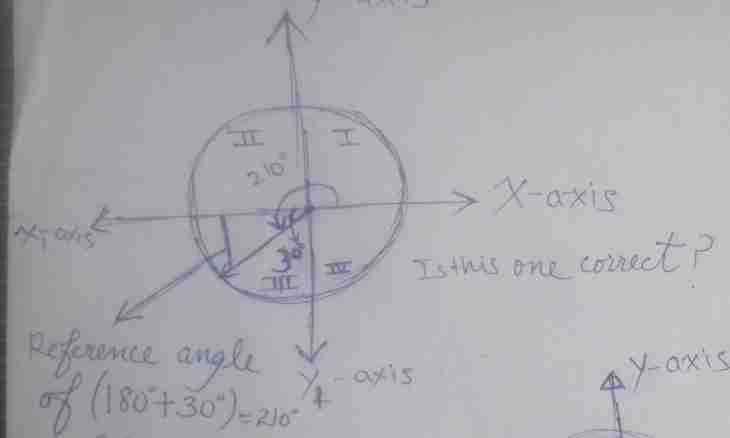By definition any corner is made by two incoincident beams which leave the only general point - top. If to continue one of beams for top, this continuation together with the second beam forms one more corner - it is called adjacent. The adjacent corner in top of any convex polygon is called external as it lies out of the site of a surface limited to the parties of this figure.
Instruction
1. If you know value of a sine of an internal corner (α ₀) a geometrical figure to calculate something there is no need - the sine of the external corner corresponding to it (α ₁) will have just the same value: sin (α ₁) = sin (α ₀). It is defined by properties of the trigonometrical sin function (α ₀) = sin (180 °-α ₀). If it was required to learn, for example, value of a cosine or tangent of an external corner, this size would need to be taken with the opposite sign.
2. There is a theorem that the sum of sizes of two any internal corners is equal in a triangle to the size of an external corner of the third top. Use it in case the size of the internal corner corresponding considered external (α ₁) is unknown, and corners (β ₀ and γ ₀) in two other tops are provided in conditions. Find a sine from the sum of the known corners: sin (α ₁) = sin (β ₀+γ ₀).
3. The task with the same initial conditions, as in the previous step, has also other decision. It follows from other theorem - about the sum of internal corners of a triangle. As this sum, according to the theorem, has to be equal 180 °, the size of an unknown internal corner can be expressed through two known (β ₀ and γ ₀) - it will be equal 180 °-β ₀-γ ₀. It means that you can use a formula from the first step, having replaced in it the size of an internal corner with this expression: sin (α ₁) = sin (180 °-β ₀-γ ₀).
4. The size of an external corner at any top is equal in a regular polygon to the size of the central corner, so, it can be calculated by the same formula, as. Therefore if in statements of the problem the number of the parties (n) of a polygon is given, at calculation of a sine of any external corner (α ₁) you recognize that its size is equal to the whole revolution divided into number of the parties. A whole revolution in radians is expressed by the doubled Pi's number therefore the formula has to have such appearance: sin (α ₁) = sin(2*π/n). When calculating in degrees doubled by Pi replace with 360 °: sin (α ₁) = sin (360 ° / n).
